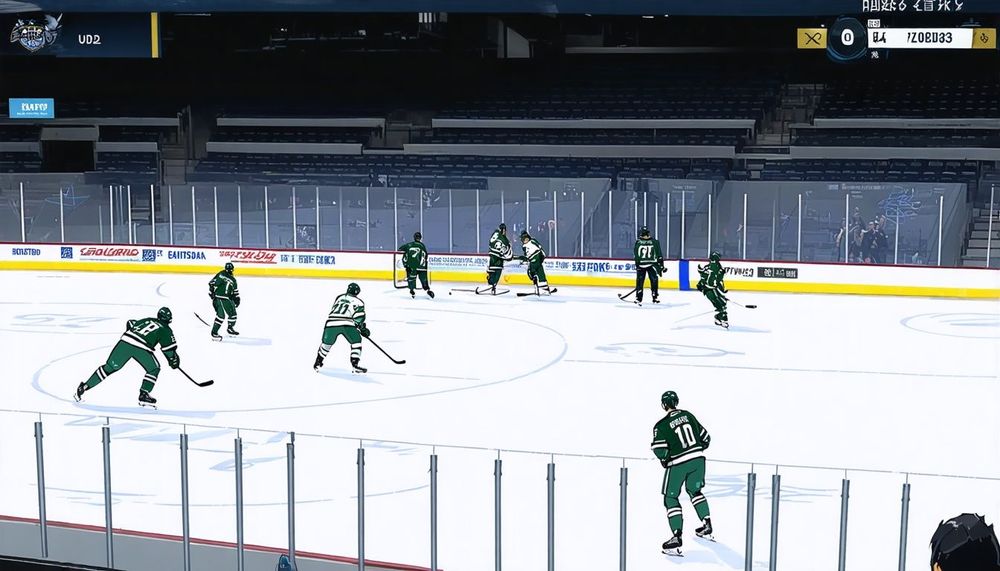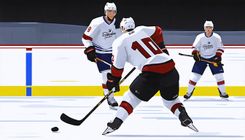Changes to NHL Collective Bargaining Agreement: New Development Path for Prospects

The current NHL collective bargaining agreement (CBA) is set to expire in September 2026. This timeline has been a source of concern for long-time followers of the sport, many of whom recall the challenges from previous negotiations. However, recent developments have emerged, as the NHL owners and the NHL Players Association have reached an agreement on the framework for a new CBA this summer. While the detailed Memorandum of Understanding has yet to be made public, significant changes have already been outlined by NHL insider Frank Seravalli.
One noteworthy alteration to come from this agreement is the allowance for each NHL team to assign one 19-year-old prospect to their American Hockey League (AHL) team each season. This new policy, which permits a maximum of 32 players per year to be assigned, signifies a transformative shift in the development landscape for NHL prospects. Currently, the agreement between the Canadian Hockey League (CHL) and the NHL stipulates that players drafted from major junior leagues in Canada—namely the Ontario Hockey League (OHL), Western Hockey League (WHL), and Quebec Major Junior Hockey League (QMJHL)—must either reach the age of 20 or complete four seasons in the CHL before they can be assigned to the AHL or ECHL. In contrast, players drafted from other junior leagues who later joined CHL teams are exempt from this stipulation. With the new CBA not being implemented until the 2026-2027 season, the initial group of players who could benefit from this change includes those born in 2007. For instance, Vancouver Canucks prospect Braeden Cootes will turn 19 in February 2026, and he could potentially be assigned to the Abbotsford Canucks later that fall if the Vancouver front office deems that his development is better suited outside the WHL.
The structure of the new rule, which is determined by age rather than draft year, presents a unique opportunity for players drafted from the CHL. A newly drafted player who turns 19 in the autumn following their draft could bypass a return to the CHL entirely. A suitable example of this is top prospect Ryan Roobroeck, who is eligible for the 2026 draft. As a September 2007 birthday, if Roobroeck were to sign his entry-level contract and spend sufficient time at his NHL team's development camp, he could be directly assigned to the AHL instead of reverting to the Niagara IceDogs of the OHL. The implementation of this developmental path is particularly beneficial for CHL-affiliated prospects, addressing a long-standing need for such an option. This necessity has been a topic of discussion for years, as previously argued in the context of players like Dylan Strome, who faced challenges in their development trajectory due to the restrictions enforced by the current system. If such an option had been available to Strome, he may have found success in the NHL sooner, potentially avoiding the lingering title of a 'bust' that has followed him throughout his career. Recent examples illustrate the advantages of playing in the AHL during the prime development years. Cole Perfetti made the leap to the AHL's Manitoba Moose when the pandemic shuttered his major junior season with the OHL's Saginaw Spirit in 2021. Likewise, Shane Wright was allowed to participate with the AHL's Coachella Valley Firebirds during the 2023-2024 season, as his lengthy tenure in the OHL coupled with the circumstances of the pandemic warranted the exception. These instances underscore that the experience gained in the AHL can prove more advantageous for young players than a return to junior hockey, where their growth could stagnate.
Specific language from insiders indicates that this policy permits 'one player per organization per season.' Consequently, teams will not be able to reassign one 19-year-old prospect temporarily and then assign another, creating a distinct pathway for their top talents. Moreover, it is uncommon for teams to simultaneously have multiple 19-year-old prospects seeking a more challenging developmental route while competing in the CHL. This new rule affords NHL teams the opportunity to closely monitor top prospects, enhance their development, and provide a place for potential call-ups when necessary. While this presents a substantial advantage for NHL organizations, it poses challenges for CHL teams. The imposed one-player limit likely reflects a consideration for the CHL's interests, as teams in the league may be reluctant to lose their high-caliber players. Despite each NHL team’s restriction of one assignment per year, there is no cap on how many players can be drawn from individual CHL teams, putting elite junior clubs at risk of losing multiple prospects to the AHL. This shift could represent a setback for the CHL, particularly in light of recent changes surrounding the pathway to NCAA hockey. However, the potential loss might be somewhat alleviated should future clarifications regarding NIL regulations diminish their appeal; this dynamic hinges on how evolving policies are interpreted by educational institutions. With the introduction of this new developmental option, top CHL players can sidestep the precarious situation where they are not NHL-ready yet also do not need to return to the junior ranks. Instead, they can transition into professional hockey at a younger age, facilitating the development of their strengths while addressing their weaknesses in a more competitive environment, as opposed to being sidelined or reverting to dominating junior competition and cultivating negative habits.
A prime example of a team that could leverage this new opportunity, albeit with reluctance to suggest it, is the OHL's London Knights. Consistently a powerhouse in junior hockey, the Knights often feature a roster brimming with talent. However, the downside of such dominance is that players may not experience significant challenges, hindering their growth. Consequently, NHL teams may opt to place their most promising 19-year-old prospects out of the Knights' winning environment and into a more demanding AHL setting. The rule change also may yield unintended, yet positive, outcomes. According to Scott Wheeler, a prospect analyst for The Athletic, several agents have indicated that many of their clients would prefer the CHL-to-AHL route—complete with the associated entry-level contract signing bonus—over continuing their education in the NCAA. Furthermore, one CHL general manager has observed that, depending on the specific language of the CBA, players might even gain arbitration rights a year earlier by opting to play in the AHL at 19. Securing arbitration rights sooner would represent a significant accomplishment for these players, offering advantages on par with, or even eclipsing, the benefits of entering professional hockey a year earlier. Such consequences of this rule modification are likely to resonate positively with players and their agents, while presenting potential concerns for NHL teams.
Additionally, the guaranteed signing bonus that players can attain by transitioning from CHL to AHL illustrates a considerable advantage, especially when weighed against the prospects of participating in NCAA hockey. This situation gains further complexity given the uncertain future of NIL opportunities and the complex regulations affecting foreign-born players in relation to NIL income. Engaging in the AHL not only ensures access to a signing bonus but also secures a guaranteed salary, simultaneously allowing players to avoid the return to school, which a majority prefer to bypass.









